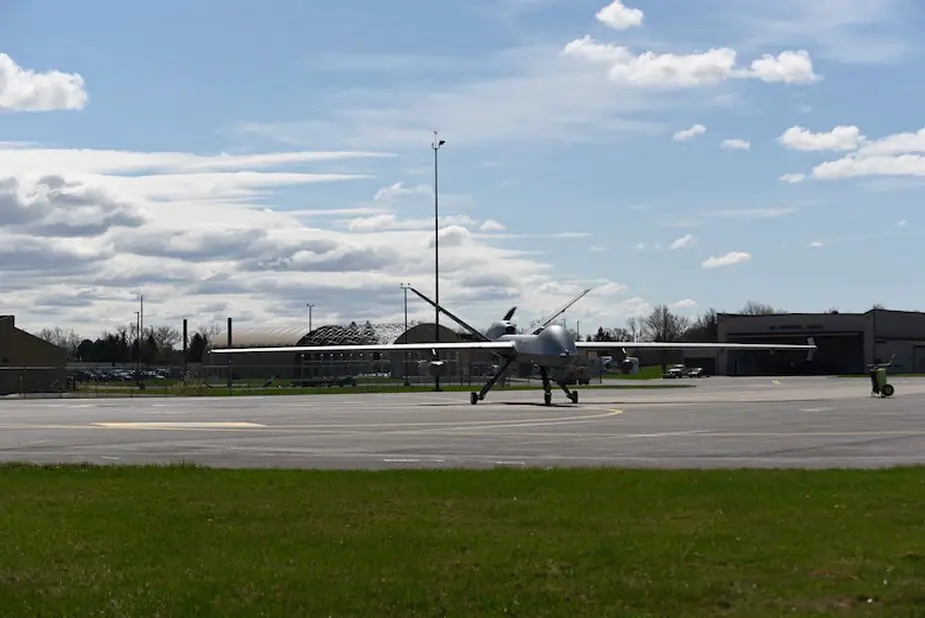Breaking news
US Air Force MQ-9 Reaper gets news and enhanced capabilities.
According to information published by US Air Force on May 12, 2021, the 174th Attack Wing has partnered with multiple Department of Defense contractors and academia to lead the effort in establishing new and additional capabilities for the MQ-9 Reaper.
Follow Air Recognition on Google News at this link
 An MQ-9 Reaper with three Ghost Reaper pods awaits takeoff at Hancock Field Air National Guard Base, April 2021 (Picture source: U.S. Air Force)
An MQ-9 Reaper with three Ghost Reaper pods awaits takeoff at Hancock Field Air National Guard Base, April 2021 (Picture source: U.S. Air Force)
According to the assistant director of operations at the 174th Operations Support Squadron, capabilities include battlefield and airspace communications enhancements as well as target identification tracking and processing.
The assistant director of operations explained there are three separate pods; the Freedom Pod, Centerline Avionics Bay Pod and the REAP Pod. Each pod is manufactured by a contractor which specializes in its unique function, leveraging expertise from previous programs.
The pods help the MQ-9 play an increased, more prominent role in the command and control arena of the battlefield. It will be able to receive and pass information to and from older fourth generation and newer fifth-generation aircraft.
This mission is solely an Air National Guard mission funded by The National Guard and Reserve Equipment Account funds. The funds were leveraged for modernization since ANG only operates legacy aircraft.
From May 3-14th, the pods will demonstrate their capabilities onboard a 174TH ATKW MQ-9 focusing on a higher level of integration with additional air and ground based assets during Pacific Command’s premier exercise, Northern Edge, at Eielson Air Force Base, Alaska.
The MQ-9 is the first hunter-killer UAV designed for long-endurance, high-altitude surveillance. The MQ-9 is a larger, heavier, and more capable aircraft than the earlier General Atomics MQ-1 Predator; it can be controlled by the same ground systems used to control MQ-1s.
The Reaper has a 950-shaft-horsepower (712 kW) turboprop engine (compared to the Predator's 115 hp (86 kW) piston engine). The greater power allows the Reaper to carry 15 times more ordnance payload and cruise at about three times the speed of the MQ-1. The aircraft is monitored and controlled by aircrew in the Ground Control Station (GCS), including weapons employment.

























